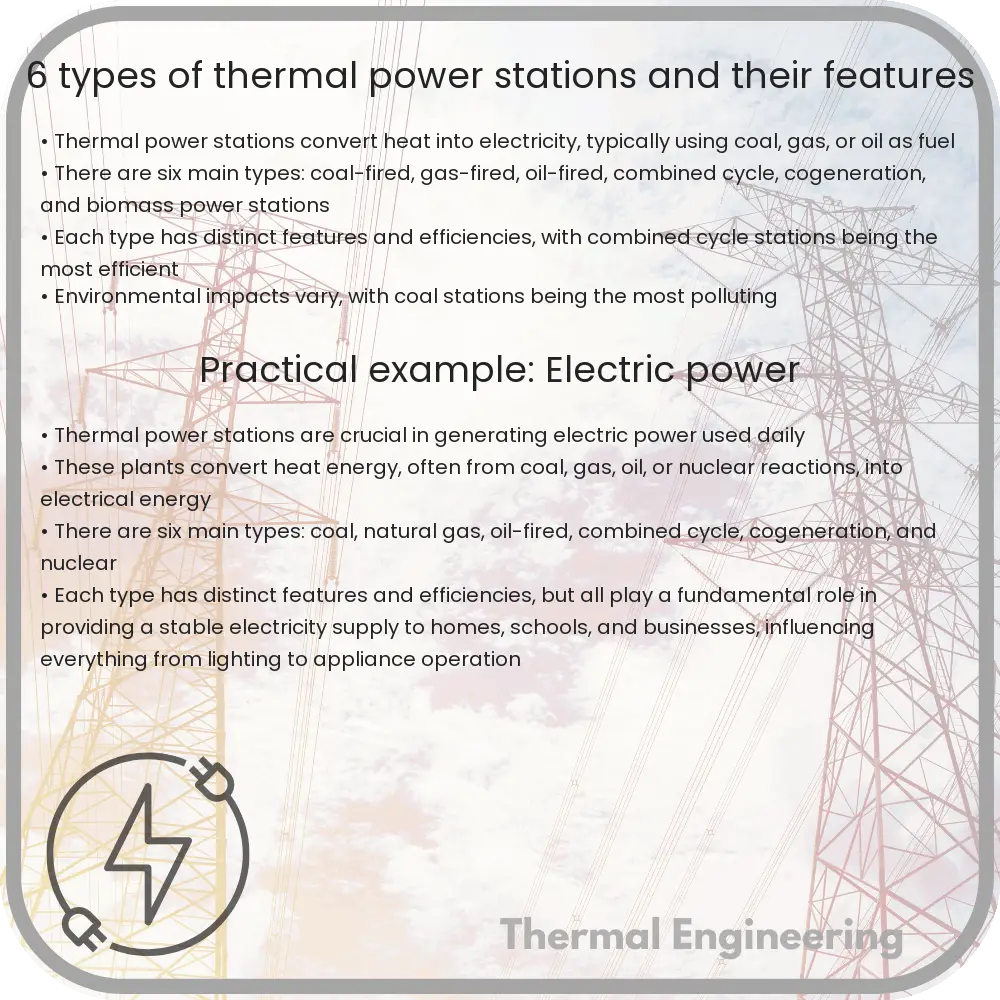Learn about thermal power stations, facilities that convert heat to electrical energy, including types like coal, gas, and biomass plants.

Introduction to Thermal Power Stations
Thermal power stations are facilities that convert heat energy into electrical energy. This process involves burning fuel to produce heat, which is then used to convert water into steam. The high-pressure steam spins the turbines connected to a generator, producing electricity. The choice of fuel and technology varies, leading to different types of thermal power stations. Here are six common types and their features.
1. Coal-Fired Power Plants
Coal-fired power plants are one of the most traditional types of thermal power stations. They operate by burning coal to produce steam that drives large turbines. These plants are known for their capacity to generate a significant amount of electricity, catering to large-scale energy demands. However, they face criticism for their environmental impact, primarily due to high carbon dioxide emissions and other pollutants such as sulfur dioxide and nitrogen oxides.
2. Oil-Fired Power Plants
Similar to coal-fired plants, oil-fired power plants burn oil to generate steam. These plants typically come into play in regions where coal supplies are not readily available but where oil can be easily imported. While they are more expensive to operate due to the high cost of oil, they can be activated quickly to meet peak electricity demands. Oil power plants also contribute to high emissions of greenhouse gases and particulate matter.
3. Natural Gas-Fired Power Plants
Natural gas power plants burn natural gas to produce electricity. They are favored for their efficiency and quick ramp-up times, making them ideal for meeting sudden increases in energy demand. Compared to coal and oil, natural gas burns cleaner, resulting in lower emissions of carbon dioxide and nearly negligible amounts of sulfur dioxide and particulates. These features make natural gas plants a popular choice in modern power generation systems.
4. Combined Cycle Power Plants
Combined cycle power plants represent a significant advancement in thermal power technology. These plants utilize both gas and steam turbines to achieve higher efficiency. Natural gas is burned in a gas turbine, and the waste heat from the gas turbine is used to produce steam for a steam turbine. This arrangement can achieve efficiencies of up to 60%, which is considerably higher than traditional fossil-fuel plants. The dual utilization of gas and steam phases reduces fuel consumption and emissions.
5. Cogeneration (CHP) Plants
Cogeneration, or combined heat and power (CHP), plants optimize the energy output from fuel burning by producing both electricity and usable heat. These systems are often employed in industrial settings or large institutions such as hospitals and universities, where concurrent demand for heat (or steam) and electricity exists. Cogeneration significantly enhances energy efficiency, as it can convert up to 90% of fuel energy into useful outputs, drastically reducing energy wastage and emissions.
6. Biomass Power Plants
Biomass power plants use organic materials for fuel, such as crop waste, wood chips, and other plant-based material. These resources are renewable, making biomass plants a more sustainable option than fossil fuel-based power stations. The combustion of biomass releases energy that is used to produce steam, driving turbines to generate electricity. While they help in reducing dependence on fossil fuels, challenges include the management of fuel supply and relatively lower energy efficiency compared to gas or combined cycle plants.
Conclusion
Each type of thermal power station has unique features and applications, influenced by factors such as fuel availability, cost, efficiency, and environmental impacts. Understanding these differences is crucial for making informed decisions regarding energy production and policy-making aimed at sustainable development. As technology and environmental policies evolve, the landscape of thermal power generation is also expected to undergo significant changes.